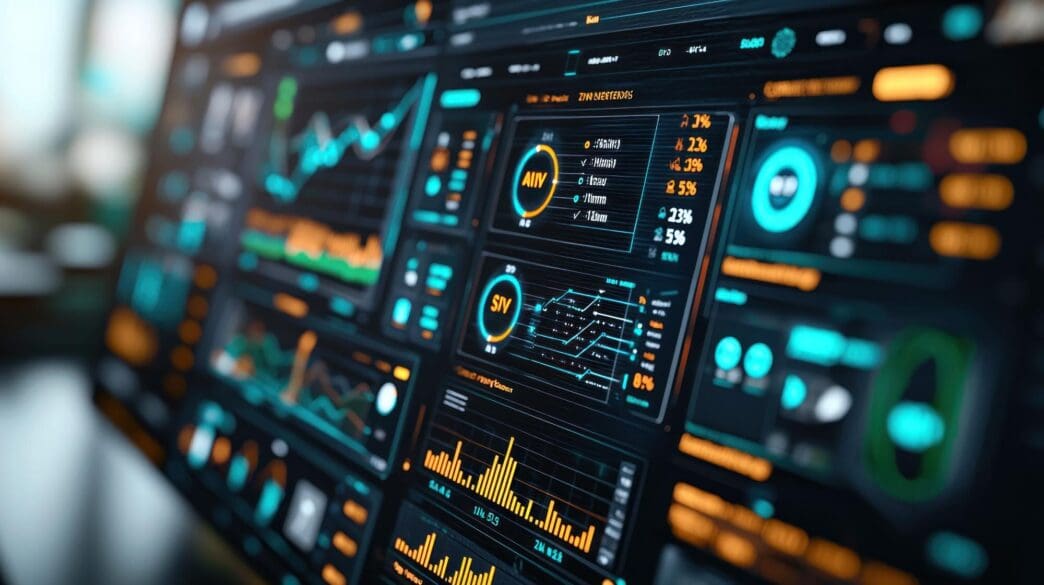Executive Summary
The Story So Far
Why This Matters
Who Thinks What?
In an era defined by an unprecedented deluge of information, big data visualization tools have emerged as indispensable assets for organizations worldwide. These powerful platforms enable businesses, data analysts, and decision-makers to transform vast, complex datasets into clear, actionable insights, facilitating more informed strategic choices and fostering significant competitive advantages. By visually representing data, these tools help uncover hidden patterns, trends, and outliers that would otherwise remain obscured, making the ‘why’ and ‘what next’ of data-driven strategy profoundly clearer.
The Imperative of Big Data Visualization
The sheer volume and velocity of big data today overwhelm traditional analytical methods and human cognitive capacity. Raw data, no matter how rich, holds little value until it can be understood and acted upon. Visualization bridges this critical gap, translating abstract numbers and text into intuitive charts, graphs, and dashboards.
This translation allows stakeholders across all levels of an organization to quickly grasp complex information. It democratizes data, empowering non-technical users to explore datasets and extract meaningful conclusions without needing specialized programming skills. Ultimately, effective visualization accelerates decision-making cycles and enhances organizational agility.
Core Capabilities of Leading Visualization Tools
The most effective big data visualization tools share a common set of robust capabilities designed to handle the unique challenges of large datasets. These features are critical for transforming raw data into compelling narratives that drive business outcomes.
First, superior data connectivity is paramount, allowing integration with diverse sources like cloud databases, data lakes, CRMs, and ERPs. Interactive dashboards are essential, providing users with the ability to drill down into specifics, apply filters, and customize views on the fly. Scalability ensures the tool can handle ever-growing data volumes without performance degradation.
Performance, particularly fast rendering of complex visualizations, is key to maintaining user engagement. Ease of use, characterized by intuitive drag-and-drop interfaces, lowers the barrier to entry for a broader audience. Advanced chart types, including heat maps, network graphs, and geospatial visualizations, enable deeper, more specialized analysis. Finally, collaboration features and robust security protocols are vital for enterprise-wide deployment and data governance.
Contenders for the Visualization Crown
While no single tool reigns supreme for every scenario, several platforms consistently stand out for their robust capabilities, market penetration, and user satisfaction. Each offers a unique blend of strengths tailored to different organizational needs and user profiles.
Tableau
Tableau, now part of Salesforce, is widely celebrated for its unparalleled ease of use and ability to produce aesthetically pleasing, highly interactive visualizations. Its drag-and-drop interface makes it accessible to business users, while its powerful analytical engine satisfies data professionals.
Tableau’s strength lies in its ability to connect to a vast array of data sources and its vibrant user community, which offers extensive resources and support. While powerful, its licensing costs can be higher, and performance with extremely massive, unprepared datasets might require additional optimization.
Microsoft Power BI
Microsoft Power BI has rapidly gained market share due to its tight integration with the Microsoft ecosystem and its competitive pricing, especially for existing Microsoft customers. It offers robust data modeling and ETL (Extract, Transform, Load) capabilities, making it a strong choice for enterprise-level data initiatives.
Power BI excels at creating comprehensive dashboards and reports, leveraging familiar interfaces for Excel users. However, its learning curve for advanced features can be steeper than Tableau, and some users find its visualization design options less flexible or polished.
Qlik Sense / QlikView
Qlik offers two primary products: QlikView for guided analytics and Qlik Sense for self-service data discovery. Both are renowned for their powerful associative engine, which allows users to explore data freely, automatically highlighting related and unrelated data points across various dimensions.
This unique engine provides deep insights by revealing connections that might be missed in traditional query-based tools. While incredibly powerful, Qlik tools can be more complex to implement and administer, often requiring a more technically proficient user base to fully leverage their capabilities.
Looker (Google Cloud)
Looker, acquired by Google Cloud, stands out with its unique data modeling layer, LookML, which ensures consistent metrics and definitions across an organization. It operates entirely in-database, pushing queries directly to the data warehouse for real-time analysis and scalability.
Looker is particularly strong for data governance and for organizations with robust data engineering practices. While powerful for analysts and engineers, its reliance on LookML can present a steeper learning curve for purely business-focused users compared to more intuitive drag-and-drop tools.
Other Notable Mentions
Beyond these leaders, tools like D3.js offer unparalleled flexibility for custom, highly specific web-based visualizations, though they require significant coding expertise. Plotly provides open-source graphing libraries for Python, R, and JavaScript, ideal for data scientists. ThoughtSpot leverages AI and natural language processing to offer search-driven analytics, allowing users to ask questions in plain English.
Key Factors in Choosing the Right Tool
Selecting the optimal big data visualization tool is not a one-size-fits-all decision; it depends heavily on an organization’s specific context and requirements. Several critical factors must be carefully weighed.
Budget and licensing models are often primary considerations, as costs can vary significantly across platforms. The volume, velocity, and variety of data an organization handles will dictate the scalability and performance requirements of the chosen tool. The skill level of the intended users—whether data scientists, business analysts, or executive decision-makers—will influence the need for ease of use versus advanced analytical depth.
Seamless integration with existing technology stacks, including databases, cloud platforms, and other business applications, is crucial for operational efficiency. Specific visualization needs, such as geospatial mapping, real-time dashboards, or predictive analytics, should also guide the selection process. Finally, robust governance, security features, and the tool’s ability to scale with future data growth are non-negotiable for long-term success.
The Future Landscape of Data Visualization
The field of big data visualization is continuously evolving, driven by advancements in artificial intelligence and machine learning. We are seeing a trend towards more intelligent tools that can automatically identify insights, suggest relevant visualizations, and even generate narratives based on data.
Natural Language Processing (NLP) is enabling users to query data using plain English, further democratizing access to insights. Augmented analytics, which combines AI with human intuition, is becoming more prevalent, offering proactive insights and recommendations. As technology progresses, immersive experiences through virtual and augmented reality may also transform how we interact with and understand complex datasets, making data exploration more intuitive and engaging.








